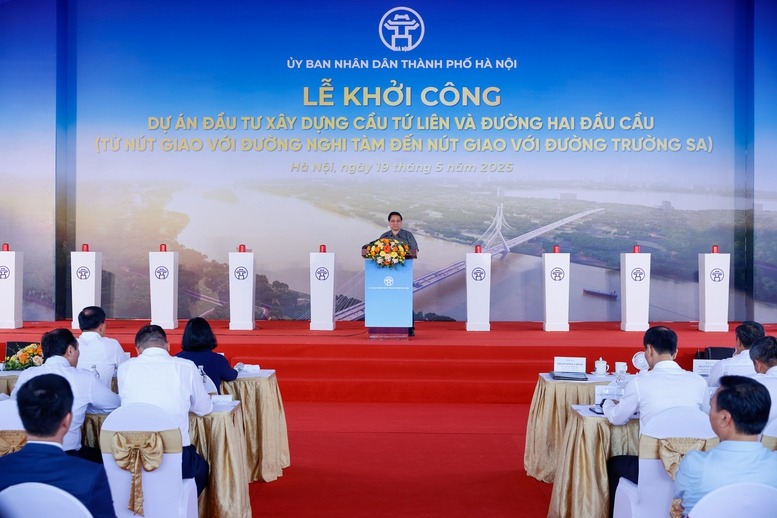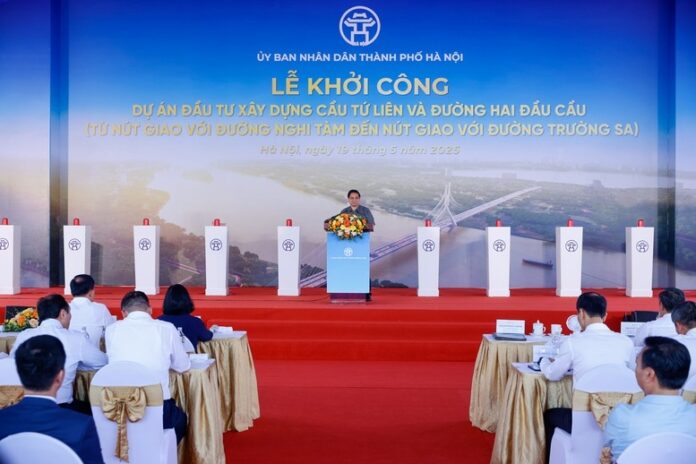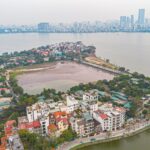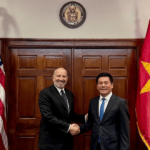The Management Authority for Transport Infrastructure Investment Projects in Hanoi has announced the results of the bidding process for Package 09/TP2-EPC, which includes design, supply of materials and equipment, and construction (including surveys and BIM) for Component Project 2: Investment in the construction of Tu Lien Bridge and its approach roads (from the intersection with Nghi Tam road to the intersection with Truong Sa road). This information was published by the Bidding Newspaper.
A renowned joint venture of domestic and foreign construction companies has been awarded the contract. Notably, the joint venture includes Pacific Construction Group (China), the China Railway Group’s Large Bridge Design Institute, Vingroup’s subsidiary Vincons Infrastructure Development and Investment Joint Stock Company, Phuong Thanh Traffic Infrastructure Investment and Construction Joint Stock Company, Trung Chinh Trading and Construction Co., Ltd., and Hung Phu Construction and Commerce Consulting Joint Stock Company.
The joint venture won the bid with a price of VND 10,790 billion (the estimated price was VND 10,866 billion). The contract is expected to be completed within 30 months.
Package 09/TP2-EPC is the main package of the project, which has a total investment of VND 15,498 billion and is funded by Hanoi’s budget. The international bidding process closed on May 16, 2025, and the winning joint venture was the sole bidder.
Earlier, on May 19, Prime Minister Pham Minh Chinh attended the groundbreaking ceremony for the Tu Lien Bridge project and its approach roads, with a total investment of nearly VND 20,000 billion.

The Prime Minister requested that the contractors strive to shorten the construction time to 24 months.
The Tu Lien Bridge and its approach road project consist of four component projects, with a total investment of approximately VND 19,830 billion. Among these, the three component projects for site clearance have a total investment of about VND 4,332 billion, a total area of about 62.53 hectares, and about 701 cases of land recovery.
The Tu Lien Bridge and its approach road project is managed by the Management Authority for Transport Infrastructure Investment Projects in Hanoi, with a total investment of approximately VND 15,498 billion. The contractor is a joint venture between Pacific Construction Group (China), Vingroup, and other partners.
The approach road at the Nghi Tam end will be 48 meters wide, while the road at the Dong Anh end will be 60 meters wide. The main Tu Lien Bridge will be a cable-stayed bridge with a width of 43 meters, featuring a steel truss main span of 500 meters and a tower height of 185 meters. The project also includes two intersections with Nghi Tam and Truong Sa roads, tunnels, and technical infrastructure such as sidewalks, lighting, architectural lighting, and greenery.
The Tu Lien Bridge is one of the 18 road bridges across the Red River in the Master Plan for the Development of Hanoi’s Transport Network by 2030, with a vision towards 2050. Its goal is to improve transportation and socio-economic infrastructure connections between the two sides of the Red River in the capital, contributing to the target of achieving a growth rate of over 8% by 2025 and laying the foundation for continued double-digit growth in the following years for the capital city and the country as a whole.
The bridge is the first of 18 Red River crossings to be inaugurated in 2025, paving the way for the construction of six other significant bridges: Tran Hung Dao, Thuong Cat, Ngoc Hoi (Ring Road 3.5), Hong Ha, Me So (Ring Road 4), and Van Phuc.
Completing the Tu Lien Bridge will facilitate connections between central Hanoi and the northern and northeastern regions beyond the Red River, as well as Thai Nguyen province. It will also provide access to the National Convention Center and the road from Gia Binh Airport to central Hanoi, contributing to the socio-economic development of Hanoi and the Capital Region.
With its unique cable-stayed design featuring two cable planes, a long main span, and tall towers, the Tu Lien Bridge will become a landmark structure in Hanoi’s architectural landscape upon its completion in 2027.
At the groundbreaking ceremony, the Prime Minister emphasized that the Tu Lien Bridge project would play a crucial role in addressing Hanoi’s traffic issues and enhancing connections within the city, between regions, and internationally through Noi Bai and Gia Binh airports.
The Prime Minister requested that the Project Management Authority fulfill its responsibilities to the highest standards and that the contractors strive to shorten the construction time to 24 months.
The Capital’s Upcoming Housing and Infrastructure Projects: Unveiling Hanoi’s Vision for Tay Ho and Ha Dong Districts
The Hanoi authorities have announced the inclusion of nine new key projects in the Tay Ho district and six in Ha Dong district. These projects are set to be transformative, including the construction of the Tu Lien Bridge, the replenishment of West Lake’s water supply, and the development of the new Thanh Ha A and B urban areas by Cienco 5.
The Easiest Place to Earn Big in Vietnam: Where Expensive Living Meets High Incomes
“The province of Binh Duong continues to lead the nation in per capita income, with Ho Chi Minh City and Hanoi also making it to the top five. However, it is Hanoi that boasts the highest income and, subsequently, the most expensive cost of living across Vietnam. This financial hub boasts a thriving economy and a vibrant cultural scene, making it an attractive prospect for businesses and individuals alike.”
“Vietnam-US Bilateral Trade Talks: Positive Outcomes and the Road Ahead for June 2025”
The second round of negotiations for the Bilateral Reciprocal Trade Agreement between Vietnam and the United States took place from May 19 to 22, 2025, in Washington, D.C. This highly anticipated event marked a significant step forward in strengthening the economic relationship between the two nations.
“Vietnam: A Strategic and Alluring Market for US Businesses.”
U.S. Secretary of Commerce, Howard Lutnick, emphasized the significance of Vietnam as an attractive and important market for American businesses. He expressed his desire for Vietnam to continue facilitating investment projects from the United States, thereby expanding bilateral trade, particularly in terms of importing goods from America.




















